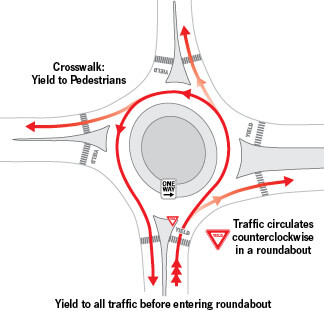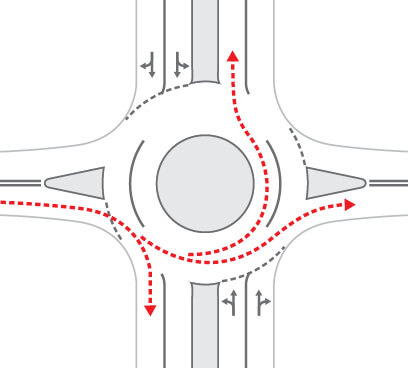13- Roundabouts
Roundabouts
Roundabouts are a safer, more cost-effective way to build some intersections. By keeping traffic moving and requiring fewer stops and starts than conventional intersections, roundabouts reduce crashes, delays and congestion, reducing fuel consumption and emissions.
Traffic moves at slow speeds in a counterclockwise direction, and is constantly moving except when yielding to traffic in the roundabout and pedestrians in the crosswalks.
To navigate a roundabout:

This example shows the traffic movement patterns through a one-lane roundabout. The one-lane roundabout is known as one of the safest and most efficient types of intersections.

In a two-lane roundabout, pick your lane in the same way you would in a regular multi-lane intersection. Get in the right lane to go straight or right. Get in the left lane to go straight or left. Drivers can also make U-turns from the left lane by following the roundabout back around to the original point of entrance.
- Slow down as you approach the roundabout and yield to pedestrians and traffic already in the roundabout.
- Look to the left, wait for a gap in traffic and merge into the roundabout.
- Once in the roundabout, keep moving, don’t stop. Do not change lanes within the roundabout.
- Proceed to your exit, look to your right, use your turn signal to indicate you are leaving the roundabout and yield to pedestrians as you leave the roundabout.
- Pedestrians should cross only at crosswalks.